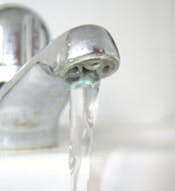Analysis by the Agency for Toxic Substances and Disease Registry Water has concluded that the drinking water system for the Tarawa Terrace family housing area at U.S. Marine Corps Base Camp Lejeune, N.C, was contaminated with tetrachloroethylene (PCE), a dry cleaning solvent, during the period of November 1957 through February 1987.
The Department of Health and Human Services (HHS) has determined that PCE may be a carcinogen. However, the effects of consumers´ exposure to drinking water contaminated with PCE are not known. Some health studies have found adverse effects in occupational settings. However, exposure to PCE alone typically does not mean a person will experience adverse health effects. Many factors determine whether people experience adverse health effects due to chemical exposure, such as dose, the duration of exposure, exposures to other chemicals in a lifetime, and overall state of health.
ATSDR estimates as many as 75,000 residents lived in the family housing units. On average, families lived in base housing about two years.
The maximum concentration of PCE in Tarawa Terrace drinking water was estimated to be about 200 micrograms per liter. The U.S. Environmental Protection Agency´s (EPA) maximum contaminant level during the period was five micrograms per liter.
The contamination occurred because the solvent leaked into the Tarawa Terrace drinking water system from an off-base dry-cleaner. In 1987, the Tarawa Terrace water treatment plant was disconnected from the base´s drinking water supply system because of contamination.
The analysis of the Tarawa Terrace drinking water system is part of ATSDR´s epidemiological study at Camp Lejeune. The study will focus on babies born during the period 1968-1985 up to the time that they were one year old.
PCE is in a class of chemicals known as volatile organic compounds, or VOCs. Some scientific literature has associated VOCs with birth defects and childhood cancers, such as spina bifida, anencephaly, cleft lip, cleft palate, leukemia and non-Hodgkin´s lymphoma.
Former Camp Lejeune Marines and their families who resided in family housing at the base are encouraged to get routine physicals and monitor their health for any changes.
Source: ATSDR


